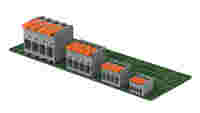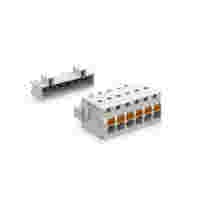PCB Connections with a Lever: Keeping Up with Miniaturization
Today, both the line and signal levels are combined on the printed circuit board. The result: Higher power density changes the requirements for connection technology.
Everyone knows it from their computers: devices have become smaller and smaller in recent years. At the dawn of the millennium, the home PC filled the so-called Big Tower, which was over 60 cm high; over the years, the hardware has shrunk and today resides in notepad-sized housings that can be comfortably inserted into a pocket.
WAGO PCB Connection Technology with a Lever:
- Intuitive: Tool-free, intuitive lever operation
- Secure: Lever clearly locks into position (open/close)
- Tool-free: Faster and easier wiring


